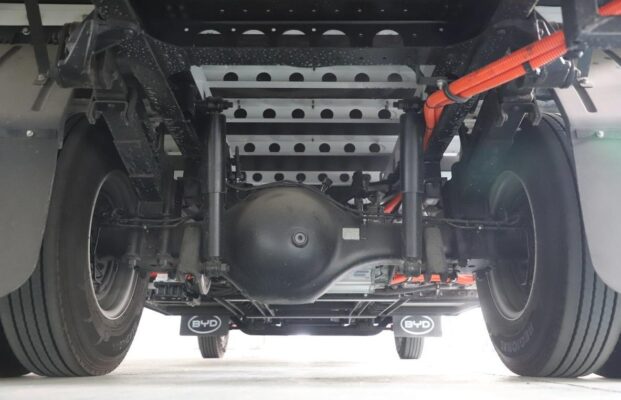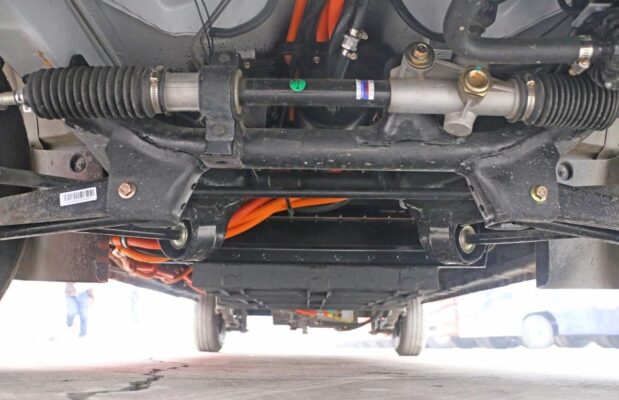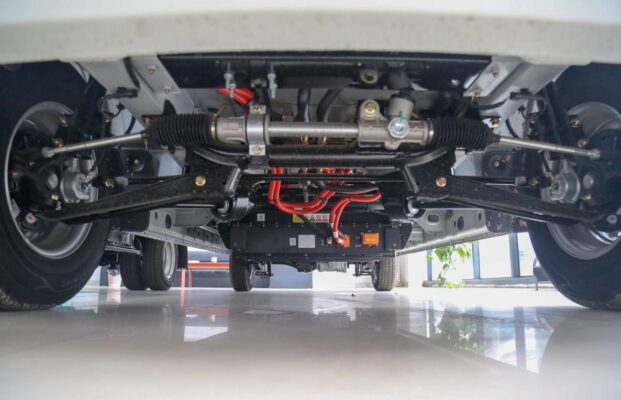Электр жүк ташуучу унааларды билүү
Cleaning Suggestions for New Energy Logistics Vehicles
жайгаштырылган тарабынан Электр жүк ташуучу унаалар
New energy logistics vehicles will undoubtedly accumulate a considerable amount of oil films, dirt, and grime after being on the road for an extended period. At such times, cleaning the vehicle becomes necessary. Whether we choose to clean it ourselves or opt for a paid service, special caution is paramount when cleaning pure electric logistics vehicles!

What specific aspects should we be mindful of when cleaning pure electric logistics vehicles?
During the cleaning process of new energy logistics vehicles, particular attention must be paid to the vehicle‘s battery pack and charging socket. It should be strictly remembered that the use of high-pressure water guns for direct flushing at these corresponding positions is strictly prohibited. The primary concern is to prevent water from infiltrating the vehicle body and the charging socket. Any water ingress can potentially lead to a short circuit in the vehicle’s circuitry and trigger a dangerous electric shock incident!
When cleaning new energy vehicles, special vigilance is required to ensure that the vehicle’s circuitry does not get moistened. Regarding the structure of new energy vehicles, given that they all rely on electronic components, extra caution is necessary during the car washing process to prevent any dampness.
Be sure to adhere to the following key points when washing the vehicle:

- Select the appropriate angle when washing the car. It is advisable to avoid direct spraying onto the surface, especially to prevent the spray from reaching critical components. Choosing the right angle helps minimize the risk of water reaching sensitive areas such as the battery pack, charging socket, or electrical connections.
Let’s elaborate on this point. A well-chosen angle ensures that water is directed away from vulnerable parts, reducing the likelihood of water penetration and subsequent damage. This might involve angling the spray from the side or from above at a slight inclination to control the water flow.
- The water pressure when washing the car should be carefully regulated and not exceed a moderate to low level. Excessive water pressure can potentially exert an adverse impact on the components. Keeping the water pressure within the recommended range helps prevent damage to delicate parts and seals.
High water pressure can force water into crevices and seals, potentially causing leaks or damaging sensitive electronic components. Maintaining a controlled and appropriate water pressure is crucial for the integrity of the vehicle‘s systems.

- During the car washing process, it is essential to remove the key to prevent any accidental starting of the vehicle and the generation of electricity. Conductive water in the presence of an active electrical system can pose significant risks to the car washers.
This precaution is vital to avoid any electrical mishaps and ensure the safety of those involved in the cleaning process. Removing the key eliminates the possibility of unexpected electrical activation and reduces the potential for accidents.
-
New energy vehicles should be dried promptly after being splashed with water. It is important to avoid direct sunlight, as this can accelerate circuit aging, and ensure that any moisture is eliminated. Swift and thorough drying helps prevent the development of rust, corrosion, or other moisture-related issues that could compromise the vehicle’s performance and longevity.
-
Throughout the cleaning process, meticulous attention should be given to prevent water from flowing into the vehicle body charging socket to circumvent short circuits in the vehicle‘s circuitry.
After wading through water, any accumulated water should be removed promptly, and a thorough inspection of the chassis, particularly the braking system, should be conducted. Special attention should also be directed towards the inspection of the power battery, motor, and power cord harness. In the event of a vehicle breakdown, it is imperative to exit the vehicle rapidly to ensure personal safety before undertaking any subsequent rescue measures.

It should be emphasized here that not only the battery is susceptible to water damage but also the motor. Although the motor is typically located in a relatively elevated position and is fully sealed, similar to the battery, it is best to safeguard it from water ingress. Moreover, the moistening of various wire harnesses within the engine compartment can readily lead to short circuits.
If the vehicle becomes submerged due to a breakdown, refraining from attempting to start the vehicle easily after submersion is crucial. It is best to entrust the vehicle to professional maintenance personnel for appropriate processing.
When your cherished vehicle stalls due to water and shuts off, avoid attempting a second start. Such an action can potentially lead to vehicle malfunction resulting from the second start. However, there is no need to be overly anxious about the wading capabilities of new energy logistics vehicles. The waterproof level of new energy vehicles is typically quite high. As long as there is no improper operation, vehicle owners can have peace of mind during daily use.
Аягында, cleaning and maintaining new energy logistics vehicles require a heightened level of awareness and caution. By adhering to these guidelines and taking appropriate precautions, vehicle owners can ensure the longevity, коопсуздук, and optimal performance of their vehicles.